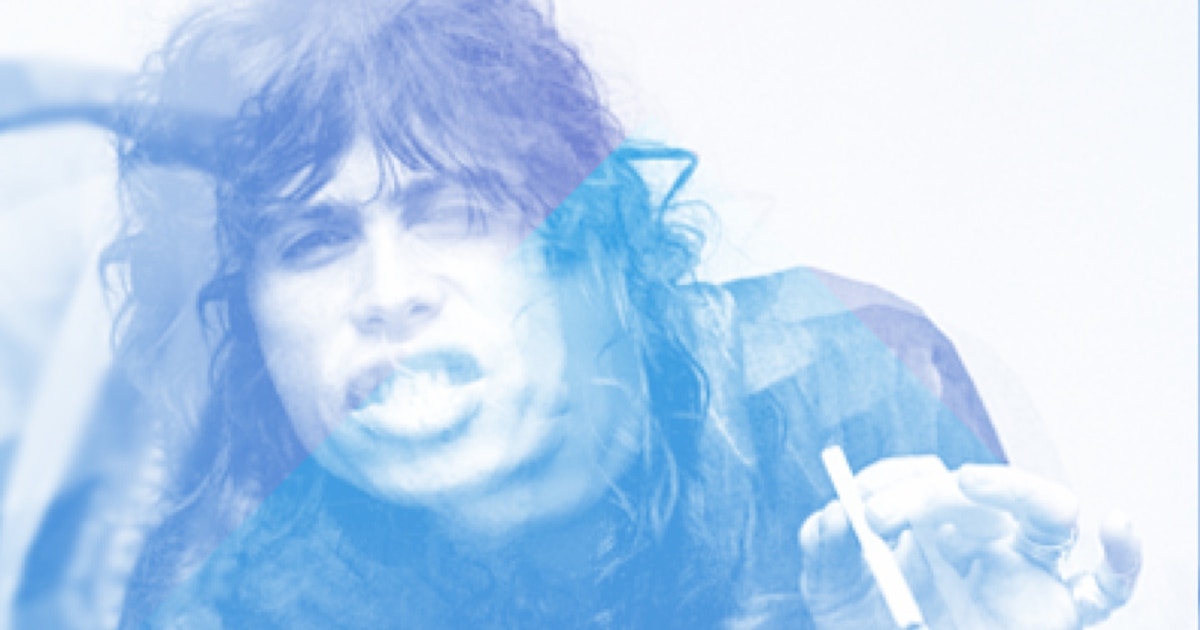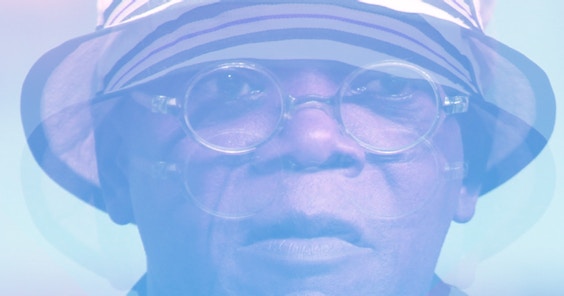I Am Sober is a free app that helps you get some control back in your life.

Addiction Controlled Steven Tyler:His Story
Last Updated: Tue, January 23, 2024“Not long after that I was walking along the beach, I dropped to my knees, I began crying because I realized that I'd gotten sober.” -Steven Tyler, Does the Noise in my Head Bother You?
The Steven Tyler alive today is very different from the Steven Tyler that rose to fame as lead singer of Aerosmith in the 1970’s. Tyler, also known as the “Demon of Screamin” and half of the “Toxic Twins” duo, has been sober for just over nine years. However, sobriety didn’t come easily or naturally to this infamous rockstar.
After decades of heavy drinking and drug abuse, it took him four attempts to finally get a significant amount of sobriety. When Tyler was initially approached by his bandmates about his addiction problem, he didn’t take them seriously. He thought they were hypocritical and that getting sober would cost him his creativity. However, little did he know that this intervention would be the first of many that would eventually lead him to the light of sobriety.
Before Aerosmith
Tyler has been creative, passionate, and absolutely wild since the day he was born. He was born as Steven Victor Tallarico on March 26, 1948 in Yonkers, New York. Growing up, music was Tyler’s main interest.
And it’s no wonder why! His father, Victor Tallarico, was a professional classical pianist. While Tyler was in school, his father formed a band and allowed Tyler to play the drums. While this was mainly for fun, it was Tyler’s first foray into the music world.
As a teen, Tyler became a huge fan of rock and idolized singers like Mick Jagger and Keith Richards. Like many others who struggle with substance abuse, Tyler began using and abusing drugs at a very young age. In fact, he was kicked out of Roosevelt High School in Yonkers for that exact reason.
While Tyler went on to graduate from Quintano's School for Young Professionals, education was not something that he took very seriously. His interest in music soon became an all-consuming passion- one which would eventually lead him to create Aerosmith.
As a teen, Tyler was in a band called Chain Reaction that did quite well. He was the drummer and back up singer in the group. In 1966, the band released a song called "The Sun" / "When I Needed You" that they managed to get playlisted on the jukebox. However, the band dissolved soon after.
After Chain Reaction’s demise, Tyler began traveling to different states to watch up-and-coming bands perform. In 1969, he was in New Hampshire watching a new band called Jam Band perform. Tyler was absolutely blown away by the band’s raw talent and ability to put on a great show.
After the performance, Tyler introduced himself to bassist Tom Hamilton and guitarist Joe Perry. The trio became good friends and in 1970, Hamilton and Perry decided to leave Jam Band, relocate to Boston, and start a group with Tyler.
At first, the band was only comprised of a bassist, guitarist, and lead singer. However, the group soon recruited drummer Joey Kramer and second guitarist Ray Tabano who was replaced by Brad Whitford in 1971. Next, they had to find a band name.
Suggestions like “The Hookers” and “Spike Jones” were thrown around, but they eventually agreed on Aerosmith. The official band name was created by Kramer after he was inspired by the cover art of Harry Nilsson’s Aerial Ballet.
After their formation, Aerosmith began playing at local venues around Boston. As soon as they hit the music scene, they began to amass a fan base. While small, they were noticed by management team David Krebs and Steve Leber, who agreed to represent them. By 1972, Aerosmith had gotten the attention of execs at Columbia Records, who signed them immediately.
Aerosmith’s first album, “Dream On,” was released in 1973. While it generated some buzz, it didn’t quite propel the group into stardom. Both their unique sound and their relationship with Columbia Records helped them to amass their own fan base.
Critics oftentimes compared Tyler’s vocals to those of famous musician Mick Jagger. While this was a compliment, the band was still in the shadows of other already established rock groups. However, the release of the band’s third album in the mid-1970’s made Aerosmith famous in their own right.
Tyler’s Stardom
Less than five years after Aerosmith debuted, the band was selling out large venues across the country. They were headlining their own shows, playing at rock festivals, and enjoying everything that came with fame. The band members, particularly Tyler, became sex symbols synonymous with youth rebellion.
They lived the stereotypical life of rockstars: sex, drugs, and rock'n'roll. Aerosmith had plenty of groupies and Tyler even managed to have the parents of a 16-year-old groupie sign legal guardianship over to him so that she could come on tour with the band.
By 1975, the band had several hit singles that were topping the charts. In 1977, the band released their album “Draw the Line,” which earned a spot on the "100 Greatest Heavy Metal Albums of All Time.” The band began touring internationally and had particular traction in Japan and countries around Europe. By this time, they had crafted their own one-of-a-kind sound. When you heard an Aerosmith song, you knew it was the band immediately.
Not only was Tyler’s voice completely unique, but the band wrote lyrics that were clever, raunchy, and full of charisma. Their instrumentals also stood out because they were a fusion of different rock subgenres. Rather than veer into punk rock or stick with classical rock, the band had a raw, metal sound.
There’s no denying that members of Aerosmith had wild success had the beginning of their careers. However, behind the scenes, the members were living not-so-secret lives of constant drug abuse. John Perry and Steven Tyler earned the nickname, “The Toxic Twins” due to the duo’s excessive drug use. The pair seemed to feed off of each other and despite their professional success, they were pulling each other down.
The Road to Rock Bottom
By the late 1970’s, Aerosmith was beginning to break down. Joe Perry left the band, breaking up “The Toxic Twins” to go solo. While this was surprising to many as Perry and Tyler were seemingly inseparable, the band members had growing animosity. Their drug use only fueled the fire.
Between 1980 and present-day, Aerosmith has broken up and regrouped more times than most can count. However, today the bandmates maintain a civil, if not friendly, relationship. The main reason for that is the sobriety of most of the members. However, the road to recovery wasn’t easy.
In Aerosmith’s heyday, Perry was using a myriad of substances on a daily basis. In his memoir Does the Noise in My Head Bother You? that was released just a few years ago, Perry wrote a detailed list. The drugs he used included marijuana, cocaine, OxyContin, heroin, methamphetamine, methadone, and LSD. During the 1980’s Tyler said that he couldn’t get high enough. Today,
Tyler estimates that he easily spent $6 million on drugs in his lifetime. In his memoir, Tyler also referred to how obsessive and compulsive his drug use- particularly with cocaine- eventually became:
“And cocaine! Doctors said it was not addictive . . . it was habituating. They didn’t know at the time that the drug would eventually take a sharp turn after a certain day. Blow, once the life of the party, became the stuff of fear and loathing, the source of devious and secretive behavior, and the mother of all lies. ‘What, me? No, I don’t have any!’ ‘Sorry, ran out, bummer, man!’ ‘Nope. Hey, I gotta go to the bathroom.’ And that’s where the rock ‘n’ roll bathroom came from. That’s when people started keeping stuff in two pockets — you had your courtesy bindle you’d share, your sock. And thus sin and doubt entered our happy world. –Steven Tyler, Does the Noise in My Head Bother You?
In a recent interview, he recalled what it used to be like before Aerosmith shows. Oftentimes, he would be borderline comatose from the sheer amount of substances that he had used during the day. Management would be worried sick because he was meant to go on stage in front of tens of thousands of people to play with the band. However, each and every time, Tyler would get his energy up as he went on stage.
He credits the phenomenon to the energy that the crowd put out. However, there was one time in particular where Tyler fell off of the stage in the middle of the concert- due to his intoxicated state- and broke some bones. At one point, says Tyler:
“I found certain drugs I loved and didn’t stop to the point of hurting my children, hurting my life, hurting my family, and hurting my band. There was a point where I didn’t have a band and I didn’t care.”
When Tyler used substances, he was erratic and unpredictable. Sometimes he was overcome with creativity, other times he was hyped up on drugs and praise from a crowd, and other times he was just plain angry.
Eventually, Tyler’s bandmates gave him an ultimatum: go to rehab or leave the band. That was enough to give Tyler an initial wakeup call. While it was not the catalyst that made Tyler get and stay sober, it introduced him to another way of living.
Tyler made various attempts to get sober between 1980 and 2010. He enrolled himself in a handful of rehabs, attended 12-step meetings, and had a supportive group of friends and family by his side. However, relapse was unfortunately common for him during that period. There were various triggers that led to a relapse for Tyler, from breaking up with a girlfriend to getting hooked on prescription pain medication after a surgery.
Prior to a relapse in 2006, he’d had 12 years of sobriety. However, Tyler is adamant that what matters isn’t the amount of times he’s been to rehab or the number of times he’s relapsed. It all comes down to the quality of sobriety that he has today.
Living Sober
It took Steven Tyler four attempts at sobriety to amass the nine years of sobriety that he has today. While he doesn’t regret his drug use- as addicts try not to regret the past- he has no intentions of giving up sobriety this time. If Tyler were to drink or use drugs again, he would be risking everything that he has gained.
In his own words:
“I got a band that’s still together, the guys are still alive, everyone’s healthy,” Tyler said. “We play better than we did 50 years ago. I mean, there was a certain rawness when we played clubs and we were all f* up. Sure, I get it. But the band is still together and still sought-after. People still want us for a million-plus dollars a night. And that’s what’s at risk if I use again. And my kids. My cats. My dogs. My beautiful f** house in Maui. My girlfriend. Everything is at risk.”
Today, 71-year-old Tyler is happy, healthy, and still in love with rock n’roll. In fact, Aerosmith currently has a residency at MGM Resorts in Las Vegas. The iconic rock band will be headlining at the famous casino until the end of 2019. While Tyler is currently living a sober, substance-free lifestyle, at one time he didn’t think that it would be possible.
Creativity and Addiction
For years, there has been debate about the connection between creativity and addiction. In fact, this was Tyler’s main concern before getting sober:
“When you’re high and you create something out of thin air, and the whole world is singing your fucking song that you wrote stoned, it’s hard to think that getting high wasn’t the reason that all happened.”
It’s impossible to deny the fact that the vast majority of actors, musicians, performers, and authors have experienced drug abuse. Steven Tyler is far from the first creative to fall victim to addiction. There are many theories as to why this is the case.
Some believe that celebrities are simply more prone to addiction because they have both easy access and sufficient funds to afford expensive drugs. Others believe that many creatives have a form of mental affliction, such as depression, anxiety, or bipolar disorder.
Studies have shown a positive correlation between those who suffer from mental illness and the likelihood to abuse drugs. However, some people believe that there is an inherent link between creativity and addiction.
A few scientific studies have been conducted on this topic, but they have focused mainly on whether substances enhance creativity rather than on whether creative people are more likely to become addicts. While many artistic types use this as an excuse to use drugs, others truly believe it. While Tyler initially believed that sobriety would threaten his creativity. However, after being sober for quite a few years, he realized that wasn’t the case:
“All the magic that you thought worked when you were high comes out when you get sober. You realize it was always there, and your fear goes away.”
I Am Sober is a free app that helps you get some control back in your life.




